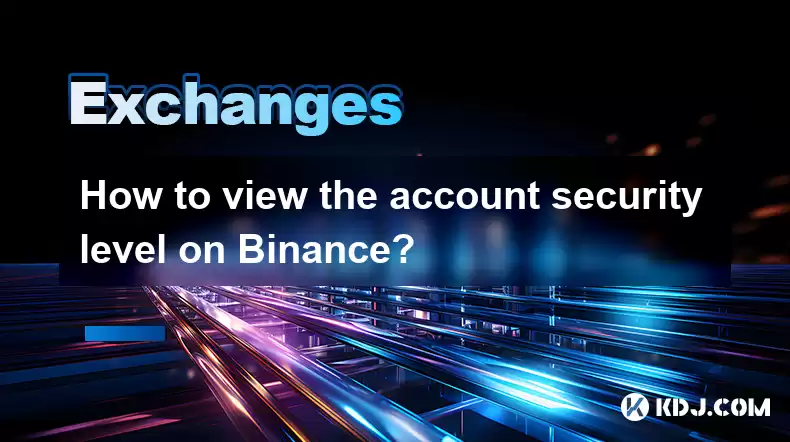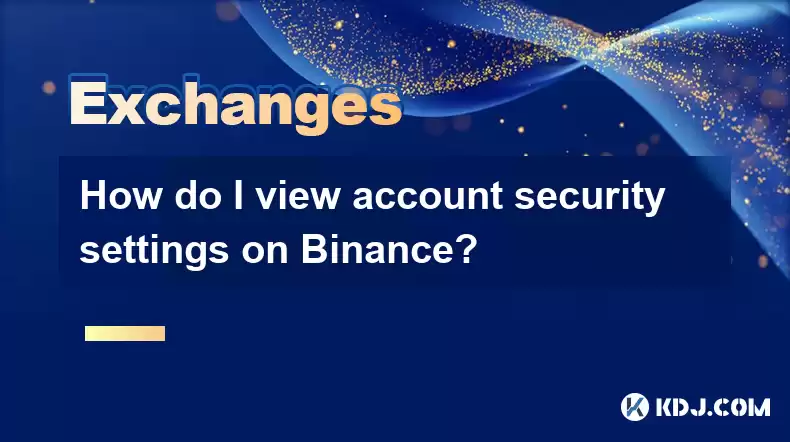-
 Bitcoin
Bitcoin $118300
-0.58% -
 Ethereum
Ethereum $3825
0.11% -
 XRP
XRP $3.137
-0.71% -
 Tether USDt
Tether USDt $0.9999
-0.01% -
 BNB
BNB $803.9
-3.37% -
 Solana
Solana $181.5
-1.94% -
 USDC
USDC $0.9999
0.01% -
 Dogecoin
Dogecoin $0.2238
-2.51% -
 TRON
TRON $0.3358
2.12% -
 Cardano
Cardano $0.7844
-2.16% -
 Hyperliquid
Hyperliquid $43.31
-1.48% -
 Sui
Sui $3.807
-4.04% -
 Stellar
Stellar $0.4203
-1.96% -
 Chainlink
Chainlink $17.79
-3.00% -
 Bitcoin Cash
Bitcoin Cash $567.8
-1.34% -
 Hedera
Hedera $0.2614
-4.30% -
 Avalanche
Avalanche $24.19
-4.46% -
 Litecoin
Litecoin $109.2
-0.74% -
 UNUS SED LEO
UNUS SED LEO $8.969
-0.01% -
 Toncoin
Toncoin $3.404
3.97% -
 Ethena USDe
Ethena USDe $1.001
-0.01% -
 Shiba Inu
Shiba Inu $0.00001307
-3.19% -
 Uniswap
Uniswap $10.33
-1.23% -
 Polkadot
Polkadot $3.884
-4.06% -
 Monero
Monero $312.9
-1.87% -
 Dai
Dai $1.000
0.01% -
 Bitget Token
Bitget Token $4.537
-2.24% -
 Pepe
Pepe $0.00001156
-3.40% -
 Cronos
Cronos $0.1437
-0.89% -
 Aave
Aave $282.8
-2.77%
How to view the account security level on Binance?
Enhance Binance account security by enabling MFA, regularly reviewing login history and device management, and utilizing features like withdrawal whitelisting; a holistic approach, not a single score, determines your security level.
Mar 04, 2025 at 04:30 am

Key Points:
- Binance offers several features to help users assess their account security.
- Multi-Factor Authentication (MFA) is crucial and significantly impacts your security score.
- Regularly reviewing your login history and device management is vital for detection of unauthorized access.
- Understanding Binance's security features and actively utilizing them is key to a high security level.
- Binance's security assessment isn't a single score but a holistic evaluation of your account practices.
How to View the Account Security Level on Binance?
Binance doesn't provide a single, easily quantifiable "security level" score. Instead, it offers a range of tools and features that, when used effectively, contribute to a more secure account. Understanding and utilizing these features is the key to assessing your own security posture. It's about actively managing your account's security, not simply viewing a numerical score.
Assessing Your Security Through Binance's Features:
- Multi-Factor Authentication (MFA): This is the cornerstone of account security. Binance supports various MFA methods, including Google Authenticator, email codes, and SMS verification. Enabling and regularly verifying your MFA is paramount. Without it, your account is significantly more vulnerable. Check your account settings to confirm that you have at least one, ideally more, MFA methods activated.
- Login History: Regularly reviewing your login history within your Binance account is crucial. This lets you identify any suspicious login attempts from unfamiliar locations or devices. Any unusual activity should be investigated immediately, and if necessary, you should take steps to secure your account further. This feature provides insights into potential breaches.
- Device Management: Binance allows you to manage the devices linked to your account. Reviewing this list ensures that only your trusted devices have access. Removing any unrecognized devices is a critical step in enhancing your account's security. This helps prevent unauthorized access from compromised or unfamiliar devices.
- Security Settings Review: Your Binance account settings offer a wealth of security features. Explore options like email verification, withdrawal whitelisting, and IP address restrictions. Actively using these features layers your security and adds considerable protection against unauthorized actions.
- Password Strength: A strong, unique password is fundamental to account security. Avoid easily guessable passwords and utilize a password manager to generate and store complex passwords securely. Regularly updating your password adds an extra layer of protection. Weak passwords are a significant vulnerability.
- Email and Phone Verification: Ensure that your email address and phone number are verified and up-to-date. These are crucial for receiving security alerts and recovering your account if necessary. Keeping this information current is critical for account recovery and security notifications.
- Withdrawal Security: Utilize Binance's withdrawal whitelisting feature to restrict withdrawals to only specific addresses. This prevents accidental or fraudulent transfers of your funds. This provides a significant safeguard against unauthorized cryptocurrency withdrawals.
- Anti-Phishing Measures: Be aware of phishing attempts, which are common in the cryptocurrency space. Never click on suspicious links or provide your login details to unverified sources. Binance will never ask for your private keys or password via email or other means. Staying vigilant against these scams is critical.
- Regular Software Updates: Keep your device's operating system and any software you use to access Binance updated. Out-of-date software contains vulnerabilities that malicious actors could exploit. Regular updates patch security flaws.
- Two-Factor Authentication (2FA) Apps: While Binance supports several MFA methods, using a reputable 2FA app like Google Authenticator or Authy is strongly recommended over SMS-based authentication. SMS is vulnerable to SIM swapping attacks. Using authenticator apps provides a more robust security layer.
Frequently Asked Questions:
Q: What happens if I suspect unauthorized access to my Binance account?
A: Immediately contact Binance support, change your password, enable or verify your MFA, and review your login history and device management settings.
Q: Is there a specific security score on Binance?
A: No, Binance doesn't provide a single security score. Your security level is a reflection of how well you utilize the available security features.
Q: How often should I review my Binance account security settings?
A: Regularly reviewing your security settings is recommended, at least monthly, and more frequently if you suspect any compromise or unusual activity.
Q: What should I do if I lose access to my MFA device?
A: Contact Binance support immediately. They will guide you through the recovery process, which may involve verifying your identity and potentially disabling existing MFA.
Q: What are the consequences of neglecting account security?
A: Neglecting account security significantly increases the risk of unauthorized access, leading to potential loss of funds and personal information.
Q: How does Binance protect user data?
A: Binance employs various security measures, including encryption, intrusion detection systems, and regular security audits to protect user data. However, individual user responsibility for securing their accounts is crucial.
Q: What are some common phishing scams targeting Binance users?
A: Common scams involve fake websites, emails, or messages impersonating Binance, requesting login details or private keys. Always verify the authenticity of any communication before interacting with it.
Disclaimer:info@kdj.com
The information provided is not trading advice. kdj.com does not assume any responsibility for any investments made based on the information provided in this article. Cryptocurrencies are highly volatile and it is highly recommended that you invest with caution after thorough research!
If you believe that the content used on this website infringes your copyright, please contact us immediately (info@kdj.com) and we will delete it promptly.
- UNITE, KuCoin, and the Future of Mobile Gaming: A New York Minute on Web3
- 2025-07-30 16:30:12
- Strategy, Bitcoin, Investment: Riding the Crypto Wave Like a Pro
- 2025-07-30 16:30:12
- JD.com, Jcoin, and Stablecoins: Hong Kong's Regulatory Embrace
- 2025-07-30 16:50:11
- Pi Network, Onramp Money, and Wallet Fails: What's the Deal?
- 2025-07-30 16:50:11
- PENGU Price Primed for Liftoff? Bullish Rally Signals Emerge
- 2025-07-30 16:55:12
- Dogecoin's Wild Ride: Token Unlocks, Circulation, and the $1 Dream
- 2025-07-30 16:55:12
Related knowledge

How do I contact customer service on Binance to resolve issues?
Mar 16,2025 at 04:30am
Key Points:Binance's customer service is primarily self-service, relying heavily on its help center and FAQs.Direct contact methods are limited, with ...

How do I view the latest announcements and events on Binance?
Mar 18,2025 at 10:18pm
Key Points:Binance utilizes multiple channels for disseminating announcements and events.The official Binance website is the primary source.Binance's ...

How do I set up a subaccount on Binance?
Mar 14,2025 at 01:50pm
Key Points:Binance does not offer traditional "subaccounts" in the sense of separate accounts with independent logins under a master account.Instead, ...

How do I view the list of supported currencies on Binance?
Mar 15,2025 at 05:35am
Key Points:Binance supports a vast and frequently updated list of cryptocurrencies. There's no single, static list.Finding supported currencies requir...

How do I view account security settings on Binance?
Mar 15,2025 at 08:40pm
Key Points:Binance's security settings are spread across multiple sections of your account. This article will guide you through each crucial area.Unde...

How do I use grid trading on Binance?
Mar 14,2025 at 04:25pm
Key Points:Grid trading on Binance involves automatically buying low and selling high within a defined price range.Binance offers a built-in grid trad...

How do I contact customer service on Binance to resolve issues?
Mar 16,2025 at 04:30am
Key Points:Binance's customer service is primarily self-service, relying heavily on its help center and FAQs.Direct contact methods are limited, with ...

How do I view the latest announcements and events on Binance?
Mar 18,2025 at 10:18pm
Key Points:Binance utilizes multiple channels for disseminating announcements and events.The official Binance website is the primary source.Binance's ...

How do I set up a subaccount on Binance?
Mar 14,2025 at 01:50pm
Key Points:Binance does not offer traditional "subaccounts" in the sense of separate accounts with independent logins under a master account.Instead, ...

How do I view the list of supported currencies on Binance?
Mar 15,2025 at 05:35am
Key Points:Binance supports a vast and frequently updated list of cryptocurrencies. There's no single, static list.Finding supported currencies requir...

How do I view account security settings on Binance?
Mar 15,2025 at 08:40pm
Key Points:Binance's security settings are spread across multiple sections of your account. This article will guide you through each crucial area.Unde...

How do I use grid trading on Binance?
Mar 14,2025 at 04:25pm
Key Points:Grid trading on Binance involves automatically buying low and selling high within a defined price range.Binance offers a built-in grid trad...
See all articles

























































































